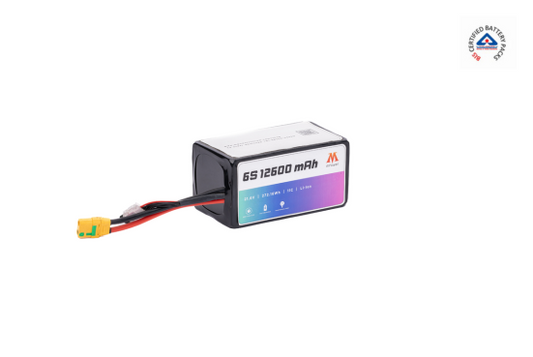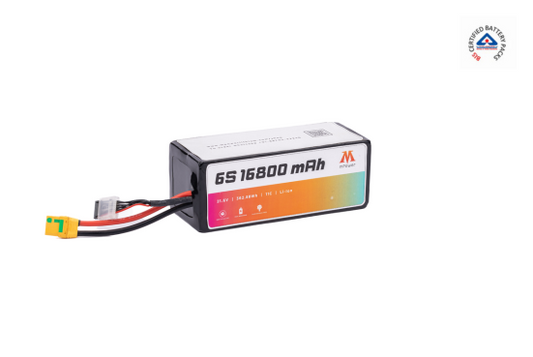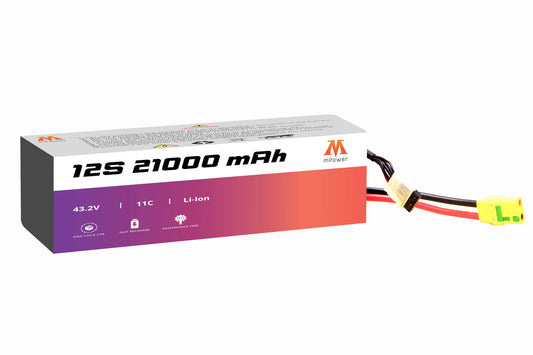Drone flying is an exciting hobby or profession, and many enthusiasts use drones for various applications such as agricultural spraying, inspections, surveying, and others. To keep their drones operational, Lithium-ion batteries are the most common type used in drones. Lithium-ion drone battery is prominently used for its high capacity, low body weight, & high output power. These features make them most appropriate for powering modern drones. It is always advised to handle these batteries correctly for their optimal use. Following some essential charging and storage practices is crucial to ensure that your drone batteries last long and function safely.
Understanding Lithium-Ion Battery
Lithium-ion batteries have revolutionized the world of drone technology, offering a perfect balance between performance, energy density, and weight. These batteries utilize lithium-ion cells, which consist of positive and negative electrodes separated by an electrolyte. The prominent elements of these batteries are Li NMC, Li NCA, which are Lithium Nickel Magnesium Cobalt and Lithium Nickel Cobalt Aluminium oxide respectively. These batteries have a high energy density, so that they can store a significant amount of energy compared to LiPo batteries. This allows drones to achieve longer flight times.
Lightweight is another crucial factor in lithium battery drones, as lower weight enables increased payload capacity and better maneuverability. These batteries have the potential to get charged and discharged correctly to maximize their lifespan.
How to Charge a Lithium-Ion Battery?
- Use a Genuine Charger: The charger is essential for charging Lithium-ion batteries. It is recommended to use a genuine charger specific to your battery. Although third-party chargers are cheaper, they can cause irreversible damage to the battery due to overcharging or incorrect charge rates.
- Charge in a Fireproof Container: Always place the drone lithium battery and the charger in a fireproof container while charging. This will contain any potential fire hazards. Never charge batteries on flammable surfaces like carpets, papers, or wood.
- Set the Charger Correctly: It is highly advised to set the voltage and current rating before connecting the battery to the charger according to the manufacturer's recommendation. This information can be found on the battery label.
- Check the Battery Voltage: Verifying the battery's voltage before charging is essential. If the voltage exceeds 5 Volts, dispose of the battery correctly and do not charge it.
- Monitor Charging: While charging, monitor the battery continuously. If you notice overheating, smoke, or odor issues, stop charging immediately and disconnect the battery.
- Store Fully Charged Batteries Safely: Unplug the charger and remove the battery from the charger after reaching full charge. Store it in a fireproof box or bag away from flammable materials.
- Cool Down the Battery: Allow the battery to cool down completely before storing or using it again.
How to Store Lithium-Ion Battery?
Proper storage of lithium-ion batteries is crucial for their safety and longevity. Follow these guidelines to store lithium-ion batteries effectively:
- Charge to Around 50%: Before storing the battery, ensure it is partially charged to around 50%. Storing a battery at full charge or completely depleted state for extended periods can lead to capacity loss and potential damage.
- Use a Cool, Dry Place: Store the battery in a cool, dry environment. Avoid exposing it to direct sunlight, extreme temperatures, or high humidity, as these conditions can degrade the battery and cause performance issues.
- Optimal Temperature: Lithium-ion batteries' most reliable storage temperature is around 20°C to 25°C. It is also advised to avoid storing the batteries in places with temperatures exceeding 60°C (140°F).
- Avoid Metal Contact: Keep lithium-ion batteries away from metal objects like coins, keys, or other batteries. Metal contact can lead to short-circuiting and pose safety hazards.
- Check Periodically: If you plan to store the battery for an extended period, check it every few months to ensure it hasn't significantly discharged. Recharge the battery if its charge drops below 50%.
- Use the Manufacturer's Recommendations: Always follow the manufacturer's guidelines and recommendations for storage, as they may have specific instructions for their particular battery models.
Why Opt for mPower?
mPower stands out as a premier lithium-ion drone battery manufacturer based in India. Renowned for our unwavering reliability and cutting-edge technology, we pride ourselves on offering top-grade lithium-ion batteries that surpass industry standards. With our rigorous manufacturing processes and dedication to quality, you can trust that our batteries are of the highest caliber.
In the realm of agricultural drones, our lithium-ion batteries outperforms the available LiPo equivalents, enabling them to spray more tanks efficiently. Besides their exceptional performance, our batteries are designed to be energy-efficient and offer recycling of used batteries to customers, making them a more environmentally friendly alternative to traditional LiPo batteries.
Conclusion
Lithium-ion batteries are popular for drone applications due to their high-performance capabilities. Still, they require careful handling to ensure safety. By following the charging and storage guidelines mentioned in this blog, you can extend your drone batteries' lifespan and prevent any potential hazards.
Always use genuine chargers and fireproof containers during charging and storage. Remember to store your batteries at the correct temperature, check the voltage regularly, and dispose of safely and responsibly to recyclers after use. Enjoy safe and efficient drone flying with Magnipower Technologies!












